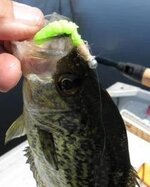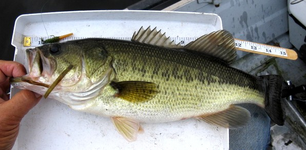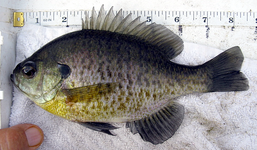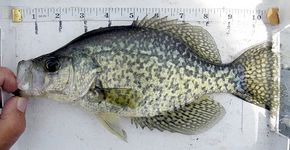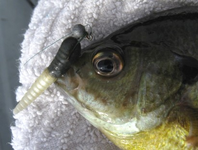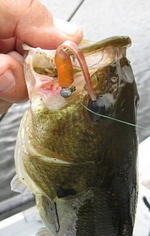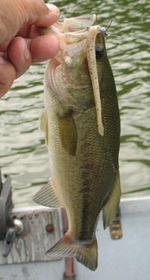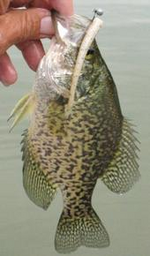SPOONMINNOW
Member
- Joined
- Oct 9, 2016
- Messages
- 261
One day I happened to stir hot plastic and noticed a film sticking to the tablespoon, thus my user name. Until now, I hadn't seen thin straight tails sold anywhere but wondered if the thin, flat plastic quiver would be a game-changer when curl-tails failed. So I cut the shape of the minnow from the thin sheet and dipped the forward half a few times to thicken the body:
Spoon Minnow:
View attachment 22625
Mad did it catch fish!!!
Next, in order to make more lures in one sitting, I had some glossy floor tiles stored from a kitchen floor replacement and figured: why not pour the film down the slanted tile, cut the shapes and pour plastic a few times on top of a part of the film. Then the body shape was cut into different sizes and then could be dipped once to make the body curves:
View attachment 22609
Just another example of an accidental discovery that led to one of the best all-species, soft plastic lure designs I've ever cast.
A few years later, I happened to discover some molds that did the same thing: the Mo Magic grub (left and center) and other thin-tail 2-2.5"shapes (two on the right).
When I say they caught everything, I mean EVERYTHING regardless of size or species!
View attachment 22615 View attachment 22624 View attachment 22613 View attachment 22611
Different flat tails from a mold:
View attachment 22612 View attachment 22610
View attachment 22614View attachment 22617
A short time later I figured: why not attach the thin tail to different lure segments such as this one using a candle:
View attachment 22623
Mo Magic tail attached to a ribbed body:
View attachment 22618 View attachment 22616View attachment 22619
Turns out, the body doesn't have to be round and, in fact, the flattened body of the French Fry stick did great catching fish so maybe the ribbing helped.
View attachment 22622View attachment 22626View attachment 22627
Spoon Minnow:
View attachment 22625
Mad did it catch fish!!!
Next, in order to make more lures in one sitting, I had some glossy floor tiles stored from a kitchen floor replacement and figured: why not pour the film down the slanted tile, cut the shapes and pour plastic a few times on top of a part of the film. Then the body shape was cut into different sizes and then could be dipped once to make the body curves:
View attachment 22609
Just another example of an accidental discovery that led to one of the best all-species, soft plastic lure designs I've ever cast.
A few years later, I happened to discover some molds that did the same thing: the Mo Magic grub (left and center) and other thin-tail 2-2.5"shapes (two on the right).
When I say they caught everything, I mean EVERYTHING regardless of size or species!
View attachment 22615 View attachment 22624 View attachment 22613 View attachment 22611
Different flat tails from a mold:
View attachment 22612 View attachment 22610
View attachment 22614View attachment 22617
A short time later I figured: why not attach the thin tail to different lure segments such as this one using a candle:
View attachment 22623
Mo Magic tail attached to a ribbed body:
View attachment 22618 View attachment 22616View attachment 22619
Turns out, the body doesn't have to be round and, in fact, the flattened body of the French Fry stick did great catching fish so maybe the ribbing helped.
View attachment 22622View attachment 22626View attachment 22627

